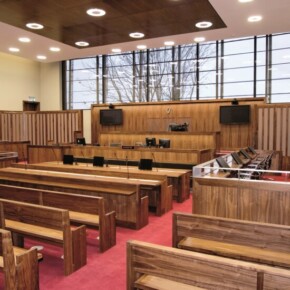RTB Q4 2021 Rent Index for new tenancies shows a 9% annual growth rate nationally
Padraig Conlon 27 Apr 2022
The Residential Tenancies Board (RTB) has today published the quarterly Rent Index report for the October to December period (Q4) of 2021.
Based on data from RTB tenancy registration records, which is then independently analysed by the Economic and Social Research Institute (ESRI), the RTB Rent Index provides rental indicators which track movements in rents for new tenancies in the Irish private rental sector.
The Index measures (i) new tenancies in existing rental properties, (ii) new properties being let for the first time, and (iii) new tenancies in properties that have not been let in the previous two years.
The RTB say it is important to note that the Rent Index is not designed to provide a measure of the rents being paid by existing tenants.
The Q4 2021 Rent Index is based on actual rents paid on 9,346 private tenancies which were newly registered with the RTB during Q4 2021 and used in the sample.
This is a reduction of 48% on the number of registered tenancies used in the sample in the Q4 2020 Rent Index.
Dublin and the Greater Dublin Area (GDA) accounted for over half (55.2%) of all new tenancy agreements registered in Q4 2021 and 59.7% of new tenancies were for apartments.
Nationally, this Index shows that the standardised average rent in new tenancies was €1,415 per month in Q4 2021, which is a decrease of €4 compared to Q3 2021.
On a yearly basis, rents in new tenancies grew by 9.0%, which is higher than the yearly growth rate in Q3 2021 (8.8%).
The standardised average rent in new tenancies for houses in Ireland stood at €1,390 per month, which is a slight drop of 0.9% on the previous quarter and an increase of 9.0% compared to last year.
The standardised average rent in new tenancies for apartments stood at €1,459 per month, which is an increase of 0.6% on Q3 2021 and an increase of 9.3% on Q4 2020.
In Q4 2021, rents in new tenancies in Dublin were substantially higher than those outside Dublin (Non-Dublin) at €1,972 per month, compared to €1,104 per month.
The standardised average rent in new tenancies in the Greater Dublin Area (GDA) stood at €1,393 as of Q4 2021 while it was €1,059 outside the GDA.
For both houses and apartments, annual growth in rents for new tenancies was strongest outside the GDA. The lowest annual growth across the regions for both houses and apartments were recorded in the GDA.
On a quarter-on-quarter basis, the standardised average rent in new tenancies fell across all regions. In Dublin, on a quarter-on-quarter basis rent levels fell by 0.8%; Outside Dublin (Non-Dublin) they fell by 1.3%; in the Greater Dublin Area (GDA) they fell by 4%; and, Outside the GDA they fell by 1.7%. The decline is likely driven by seasonal factors which affect the third quarter comparison period.
The highest standardised average rent in new tenancies for Q4 2021 was in Dublin at €1,972 per month while the lowest monthly rents were in Leitrim, where the standardised average rent in new tenancies stood at €740 per month.
On a quarterly basis, rents in new tenancies fell in 14 counties in Q4 2021. Rents for new tenancies in Roscommon increased the most with a quarterly growth rate of 12.6%.
On an annualised basis, in Kildare for Q4 2021 there was no growth (0.0 percent) in the standardised average rent in new tenancies.
Niall Byrne, RTB Director, commenting on the release of the RTB Q4 2021 Rent Index said:
“Today’s Rent Index reports on rental price changes in new tenancies and shows continued growth in rents being set for this proportion of the overall private rented sector.
“We also note a fall in the number of tenancies registered in the quarter.
“This is likely driven by factors such as continuing constraints on the supply of rental properties and by current tenants choosing to stay longer in their existing tenancies.”
“On 4 April 2022, new legislation was introduced requiring landlords to register all tenancies with the RTB on an annual basis.
“This is a significant change for the residential rental sector and for landlords. One of the public benefits from annual registration will be to provide the RTB with current data on all rents which will enable us to publish more detailed reports on rents and rent levels, for both new and existing tenancies, beginning, we expect, in 2023.
“The current Rent Index can only report on movements in rents for new tenancies registered with the RTB.
“With access to annual registration data, the RTB will be able to identify new rental stock that hasn’t been let previously, the type and size of landlord of this stock, the stock leaving the sector and the type and size of landlords associated with this, and, very importantly, rent levels in all existing residential rental stock.”











